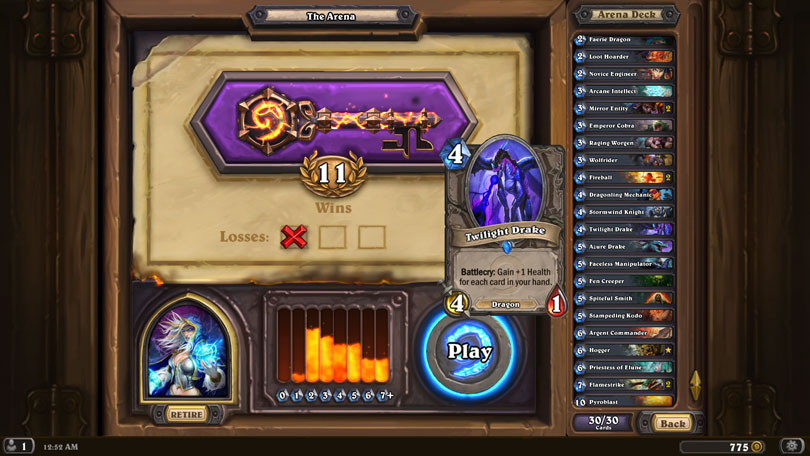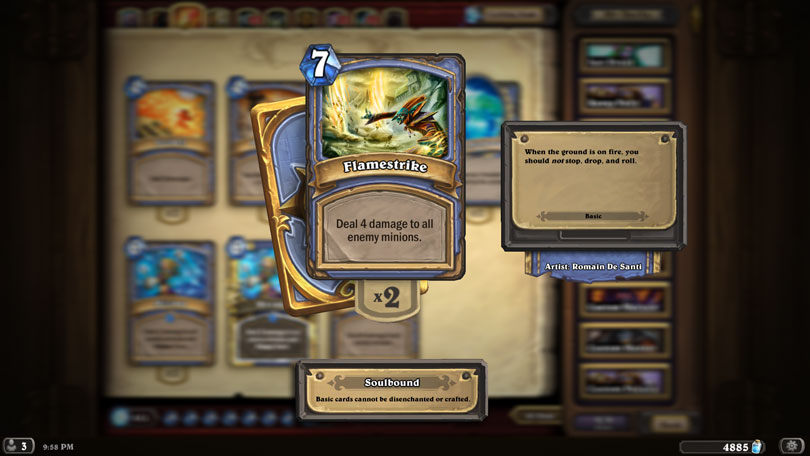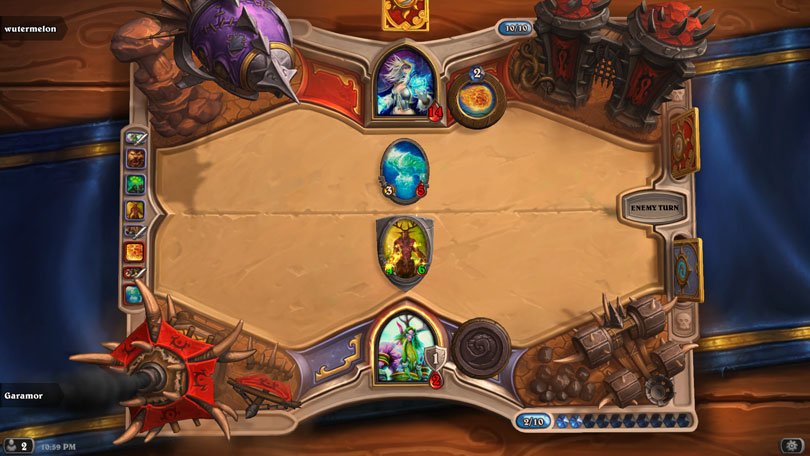Hearthstone: Why mages are the most powerful arena class
Overview
If you play hearthstone on a day to day basis, you’re likely playing one of two modes. You either enjoy the aspect of comparing yourself to the skill of other players through the process of deck creation in constructed, in hopes to perhaps one day hit the elusive legendary rank, or you like the random draft of arena and the rewards it provides. One of the biggest reasons why arena is even played at all is because it’s one of the only reliable ways to gain a source of gold in the game without having to rely on daily quests. Thus it makes complete sense that when it comes down to your choice of the three heroes you’re to randomly select from, you’re looking to pick the choice which provides you the best edge. Mages, by many players is considered to be the most versatile of classes in arena, and is also statistically proven to be the class with the highest win rate in arena. But what makes mage such a strong class isn’t the reliability of big strong minions that require your opponent to make poor value trades, but rather it’s the mages access to so many answers which make them an ideal class to take into arena.

Versatility
Mages, with the exception of Archmage Antonidas, really only have two minions which are very solid on their own. Mana wyrm usually forces the opponent to remove it as soon as it makes its way onto the board because of the amount of spells that can make the simple 1 attack 3 health minion into an even larger threat. The other strong minion that is usually drafted in excess by mages is the water elemental. Although it doesn’t directly remove a weapon from the field, it can stall the opponent’s use of a weapon which typically allows you to gain some tempo back into the game. Due to the fact that it’s a 4 mana card with 6 health, it’s also very difficult to remove from the board without the use of direct removal. With both of these cards being basic cards, it’s fairly likely you’ll at least see one of each in a mage’s deck, if not even more than that.
This brings us to the problem with mage in arena. Not their problem in terms of weakness, but rather the fact that all of the basic answers you could ask for to remove your opponent’s minions are available to the mage as basic cards. A lot of the rares and epics that are mage specific are very situational, synergistic cards that simply don’t provide a ton of value on their own in arena. Certainly a card like vaporize is good, but only if the opponent doesn’t have cannon fodder to test the secret in the first place. Likewise, ethereal arcanist can be good, but with the unreliability of your draft picks, it’s unlikely you’d take him over any other rares that come up. This is only further amplified by the fact that a lot of the mage’s secrets aren’t common or basic cards and are in fact rare or even epic. Alternatively though, you could end up picking up even more board clear and control via cards like blizzard.

Removal Comparison to other classes
Thus we have the core problem with mages. It’s simply too easy for them to draft answers to both big threats and multiple threats. Flamestrike, fireball, and polymorph are all basic cards. Combine these with the ability to stall out turns with other common cards like cone of cold, and mages are extremely pesky to deal with, and extreme caution needs to be taken into consideration when deciding whether you should fill your board on turn 7 or assume it’s in their hand and avoid going through the heartbreak.
Comparing this to other classes in arena, we see that one of the two ways of hard removal is usually balanced through the rarity cost. With shamans, hex is a basic card but their AoE board clear of lightning storm is much harder to come by being a rare. Lava burst is also a rare compared to fireball. Warlocks can clear the board with hellfire, a common card. However in order to have a strong single target clear, siphon soul isn’t as frequently available due to being rare. Finally, when we compare this to druids we see similarly that the more versatile board clear of starfall is also considered a rare. Although swipe in certain situations can clear the board, a 1 damage AoE in most scenarios isn’t reliable enough to clear a lot of boards outside of early aggro.
Now obviously, clearing the board of enemy minions isn’t going to outright win you the game. But the fact of the matter is that arena is completely unreliable in what minions you happen to get. Although the most ideal way to fight a mage is by mixing the board with low and high health creatures, sometimes your arena draft doesn’t end up getting more than 2 cards that have over 6 health, meaning that if the mage you’re up against has the answers for your big cards, you can’t flood the board with low health minions in later portions of the game without inevitably losing any tempo you’re attempting to set up.

Conclusion
Thus the strength of mages comes from there availability to great answers to both small and big minions alike. They don’t require many big minions themselves to win and can simply rely on gaining tempo advantages via board clears and hard removal in order to squeak out the victory in arena. When you also combine the fact that they have plenty of common cards that can stall your board such as water elemental and cone of cold, those plays could end up with you not using your mana efficiently in fear of the impending flamestrike turn that is soon to come.
I feel that as a whole, the best way to deal with mages in arena is simply by making one of their many hard removal or board clearing spells have a change in their rarity to prevent the card from being seen so commonly in mage decks. This would make mages more in line with the rest of the classes in terms of immediate availability in drafts, and possibly make your games after 7 wins less of an ‘x vs. mage’ match up in most cases. This also would have very little impact on constructed as the actual cards wouldn’t be changed in terms of power, they would simply just be a little more in cost to craft.
Brandon Rendina